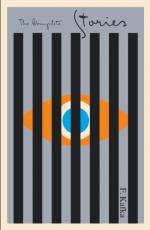|
This section contains 1,726 words (approx. 6 pages at 300 words per page) |

|
SOURCE: Wasserman, Martin. “Kafka's ‘The Animal in the Synagogue’: His Marten as a Special Biblical Memory.” Studies in Short Fiction 34, no. 2 (spring 1997): 241-45.
In the following essay, Wasserman posits that the marten-like character in “The Animal in the Synagogue” symbolizes the female prophet Huldah.
Exploring the identity of Kafka's marten-like creature in his story, “The Animal in the Synagogue,” Marthe Robert speculated that it should be viewed as the memory of something sacred (113-14). Elaborating on Robert's conjecture, I would argue that the marten specifically symbolized the female prophet, Huldah.1
Kafka probably wrote “The Animal in the Synagogue” in 1923,2 when he had become quite competent in his understanding of Hebrew. One of his teachers, Jiri Langer—who had been a member of the Hasidic sect and thus would have been highly proficient in Hebrew—said of his student: “Yes, Kafka spoke Hebrew. We always spoke Hebrew in the...
|
This section contains 1,726 words (approx. 6 pages at 300 words per page) |

|


